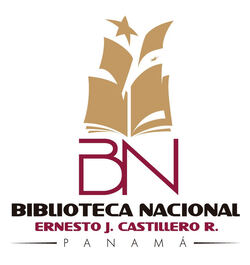The content of the publications and the links suggested in them are the sole responsibility of the authors and not of the Metropolitan University of Education, Science and Technology (UMECIT) or of the journal ORATORES. They are protected by international copyright laws as well as the logos of UMECIT AND ORATORES, hence their reproduction is totally prohibited.
This work is licensed under a Creative Commons Attribution-NonCommercial-NoDerivatives 4.0 International License.
The authors maintain the copyright and transfer the right of the first publication to the journal, with the article registered with Creative Commons Attribution-NonCommercial-NoDerivatives License, which allow others They can download the works published in this magazine and share them with other people, as long as their authorship is recognized, but they cannot be changed in any way nor can they be used commercially.
Authors are recommended to include their work in social networks such as Researchgate and institutional repositories once the article or visible fact has been published on the journal page, without forgetting to include the digital document identifier and the name of the journal.



Abstract
Critical essay on the priority task of the Church: Evangelization. Especially in our Latin America. A theological reflection on the following questions: Will it make any sense today to speak of a pastoral option in our Latin American Church? Is the Latin American Church considering the search for new missionary strategies that are in line with the socio-economic development of Latin America? Have the different episcopal conferences carried out any serious evaluation of the good practices and their methods used in the development of the evangelization of our Latin America? What have been the fruits that the Latin American Church has reaped during its actions of evangelization? Being a Church with more than 500 years of presence in different socio-political states, the Church must consider the need to rethink itself for the benefit of everyone on the planet, an opening of its principles and dogmas would allow us to have a broader concept of our vision and mission in accordance with the current situation we live in the world.
Keywords
References
Castillo, Fernández (1978). “Evangelización en América Latina”. Revista Concilium. Año XIV, tomo II. No. 134-137. Ediciones Cristiandad. Madrid, 1978. Págs. 110-115. (6)
CELAM (2008), Documento de Puebla No. 351. (11)
Congreso Latinoamericano de Evangelización. América Latina y La Evangelización en los años 80 (1979). Lima. Pág 285. (13)
Fernández, Castillo. Congreso Latinoamericano de Evangelización. América Latina y La Evangelización en los años 80 (1979). Lima. Op. Cit. Pág. 114. (14)
Floristán, Casiano (1978). La Evangelización, tarea del cristianismo. Ediciones Cristiandad. Madrid. Pág.19. Cf. Fernández, Castillo. Op. Cit. Pág. 112. (9)
Gutiérrez, Gustavo (1971). “El fenómeno de la contestación en América Latina”. Revista Concilium. Año VII, tomo III. No. 67-70. Ediciones Cristiandad. Madrid. Pág. 203. (9)
Hollenweger, Walter (1978). “Objetivos de la Evangelización”. Revista Concilium. Año XIV, Tomo II. No. 134-137. Ediciones Cristiandad. Madrid, 1978. Pág, 53. (8)
Instituto Fé y Secularidad (1972), Belloso, José M. Rovira. Fe y Nueva sensibilidad histórica. Ediciones Sígueme. Salamanca. Pág. 369-370.(10)
Jedin, Hubert. (s.f.), Op. Cit. Pág. 791. “Hasta entrado el siglo XIX mantuvo la Iglesia el carácter de una institución extranjera”. (7)
Jedin, Hubert. (1972). Manual de historia de la Iglesia. Tomo V. Editorial Herder. Barcelona. (“Misiones en el territorio español de patronato” pág. 783). = Las bulas papales: Inter caetera del 3 y 4 de mayo de 1943 y la Eximia devotionis del 4 de mayo de 1493.(2) Ibid, pág, 785-786.(3)
Jeremías, Joachim (1983). Abba y el mensaje central del N.T. Ediciones Sígueme. Salamanca. Pág. 207. Cf. Langer, Wolfgang. Kerigma y Catequesis. Editorial Verbo Divino. Estella, 1970. Pág. 35. (12)
Rogier, L.J. (1977). Nueva historia de la Iglesia. Tomo IV. Ediciones Cristiandad. Madrid. (1. América Española y Portuguesa. Págs. 195-199). (1)
Rogier, L. J. (s.f.). Op. Cit. pág. 196. Juan J. de Sepúlveda promotor y teórico de la esclavitud en América, interpretó la Política de Aristóteles aparentándola con el recurso rebuscado de que “el indígena era un esclavo.” Es entonces cuando Sepúlveda propone la servil teoría de que: “Los que por prudencia y por ingenio, pero no por sus fuerzas corporales, éstos son SEÑORES por naturaleza; al contrario, los TARDOS Y TORPES de entendimiento, pero corporalmente robustos para llevar a cabo las tareas necesarias, éstos son siervos por NATURALEZA.” (Citado por Gerbi Antonello) Justifica el tomar a los originarios como seres inferiores y esclavos por su naturaleza.. (Cf. -. DE LAS CASAS, Bartolomé. Historia General de Indias. Libro III. Capitulo LXI. Fondo de Cultura Económica. Serie Cronistas de Indias. 1949. FERDANDEZ DE OVIEDO, Gonzalo. Sumario de la Natural Historia de Indias. Fondo de Cultura). Kate Maltby; “Epidemias y Salud en Panamá. 1510–1821. (4) Ibid, pág. 198.(5)
Stanley, David (1966). “La predicación primitiva: Esquema Tradicional”. Revista Concilium. Año II, Tomo III. No. 18-20. Ediciones Cristiandad. Madrid. Pág. 453. (12)
Downloads
Publication Facts
Reviewer profiles N/A
Author statements
- Academic society
- Universidad Metropolitana de Educación, Ciencia y Tecnología
- Publisher
- Universidad Metropolitana de Educación, Ciencia y Tecnología



















